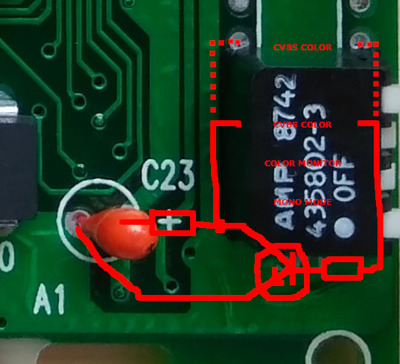Scali wrote on 2019-08-26, 08:53:You may be right.
My idea was to make the 'inverter' engage only in mode 6, because that mode is broken. The other modes are fin […]
Show full quote
VileRancour wrote:I guess that would work for "artifact-only" colors which are produced by rearranging white/grey pixels, as in the common mode 6 stuff, but then the 'solid' CGA colors would be inverted as well since they're independent of the pixel clock.
You may be right.
My idea was to make the 'inverter' engage only in mode 6, because that mode is broken. The other modes are fine on the ATi.
Could be done with a manual switch, because the ATi has an integrated circuit, so it would probably be very difficult to determine what mode it is in from the PCB.
Then all the 'regular' CGA composite modes would work.
But I have no idea what would happen with the enhanced colour modes from 8088 MPH. Then again I wouldn't expect those to work anyway, given how even the relatively subtle differences of old vs new CGA throw those colours off.
It might actually be much simpler than that.
Apparently, the "modulated" color carrier for the CVBS signal is just another digital signal from the main chip and – even better – it is routed through position three of the DIP switch, which turns composite color on and off.
So essentially, one would only have to switch that off and route the signal through a 1-bit inverter, instead. – And then never touch the switch, again!
The actual mod might be as simple as this:
(The dotted lines mean that you can use either pad. They are connected by traces on the back side.)
